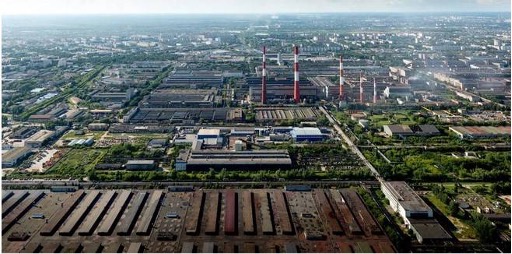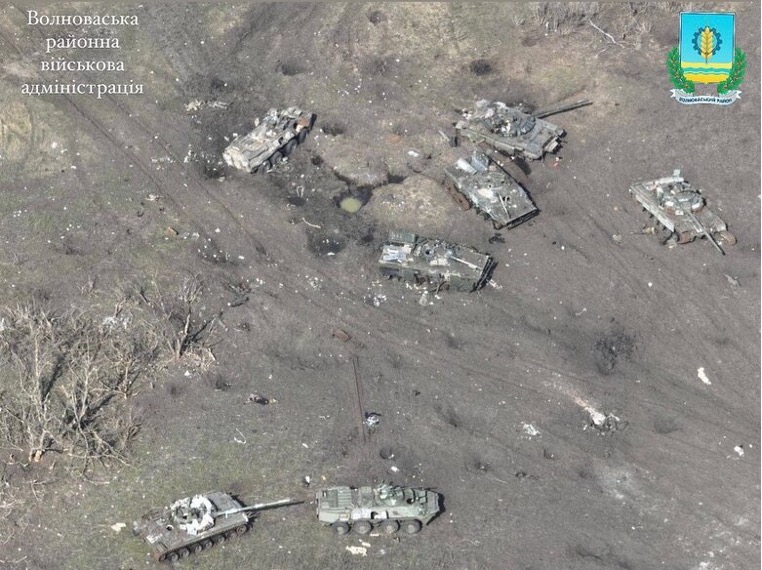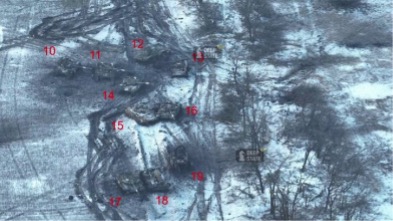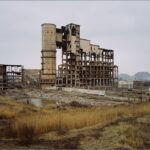In the last week of March 2023 the Deputy Chairman of the Security Council, Dmitry Medvedev, travelled to the Chelyabinsk Tractor Plant to chair a meeting of the working group of the Military-Industrial Commission of the Russian Federation. Medvedev now holds the same post once held by Molotov during the Second World War, charged with galvanising Russia’s defence plants. But the former law professor does not make a convincing Bolshevik thug, even wearing black leather coats, which were à la mode with Russian revolutionaries.
The meeting did not go down well. His act as a tough man from Moscow was an embarrassment. To the discomfort of the assembled, Medvedev read out Stalin’s 17 September 1941 telegram to defence factory heads: ‘I ask you honestly and on time to fulfil orders for the supply of tank hulls,’ the telegram begins. If you do not, Stalin continues, ‘I will begin to smash you like criminals who disregard the honour and interests of their homeland.’ Nobody would have doubted the dictator meant it. Chelyabinsk, as an aside, is the place that witnessed a notorious incident in 2006 involving a drunken sergeant who placed a conscript in a stress position for several hours. Gangrene set in, necessitating a double amputation and castration to save the unfortunate individual’s life.
In a childish gesture, Medvedev joked to Russian media, RIA Novosti, that he read the telegram ‘to cheer up‘ the defence bosses. He added, ‘We will make 1,500 tanks alone this year,’ a riposte to the arrival of the first Western tanks in Ukraine. This article examines the credibility of this claim and the broader challenge facing the Russian defence industry following catastrophic battlefield losses.
Where are Russia’s armoured vehicles made?
A NATO country like Britain, for example, has lost all its historic plants that once made tanks, armoured fighting vehicles, artillery systems and other military vehicles. In Russia, despite the dissolution of the Soviet Union and Warsaw Pact, seven armoured vehicle plants remain in operation, albeit one declared bankruptcy in 2017, and all depend on the State Defence Order and subsidies. Collectively they produce in the order of 52 varieties of armoured vehicle.

In a theoretical scenario where the seven armoured plants were instructed to replace losses, setting aside increasing production, they would be required to manufacture more than 5,700 vehicles. Total Russian losses are now in the order of 10,000 platforms and systems. These are impossible numbers. But is Medvedev’s specific tank production claim realistic?
Soviet-Russian tank production
During the Second World War 11 Russian plants produced over 116,000 tanks, self-propelled guns (33 types), and 13,000 armoured vehicles (6 types). This voluminous output was sustained during the 1950s (the Soviet Union was the only combatant not to demobilise following the surrender of Germany and Japan) and only started declining through the 1960s. Stalin passed away in a fog of internal purges and paranoias over foreign enemies.
Through the 1960s-70s, as many as 4,000 tanks were being manufactured annually, but this number declined by the time of the Gorbachev premiership and the subsequent dissolution of the Soviet Union in 1991.

The 1990s were a disaster for the re-established armed forces of the Russian Federation. Defence industries suffered a significant decline.
Revival only really started in the Shoigu-era (2012-present). Russian defence industrial policy involves the modernisation of legacy platforms and new builds. T-72 Bs/B1s and BAs were upgraded to T-72B3M standard. T-72B3-equipped units were left as they were, directing the main efforts towards returning to service T-72 tanks of earlier modifications. T-80BV tanks were upgraded to T-80BVM standard. UVZ also manufactured new-build T-72B3s/B3Ms, T-80BVMs and T-90A/Ms, and export variants. From 2012-2020, according to Voennyi vestnik Iuga Rossii (Military Bulletin of the South of Russia), Russia’s tank producers UVZ/Omsk delivered over 1,000 tanks. This fits with independent sources such as the reliable Russian Centre for Analysis of Strategies and Technologies (CAST), which states around 1,340 ‘modern’ tanks were manufactured or upgraded in the more extended period 2000-2020, with the Russian Army sustaining a total operational fleet of 2,600 tanks at the time of the invasion of Ukraine. Total tank losses at the time of writing stand at over 1,900, or the inventories of several NATO armies. Twenty years of industrial effort has been turned into an iron mountain of junk.

Most recently, the 2020 Report of the Board Session of the Russian MOD stated ‘220 tanks and armoured vehicles were delivered in that year (a pandemic year).1 Also according to the MOD, more than 240 modern and upgraded T-72B3M, T-80BVM and T-90M tanks would be received by the Russian Army in 2021, the last year before the invasion. However, Voennoye Obozreniye (Military Review) reported a lower figure of 170 modern tanks (T-90Ms, T-80BVMs and T-72B3s) for the same year.2 These disparities are not unusual, with the MOD typically citing inflated numbers and defence journals reporting lower, more realistic numbers.
In sum, it might be fair to say UVZ (and to a lesser extent the plant at Omsk, which specialises in the T-80) were producing or upgrading around 100 tanks per year from 2012 onwards, but this effort was ramped up to closer to 200 in the last two years before the invasion.
Russian tank production today
Russian tank production has been significantly affected by sanctions. Russian MOD denials are quixotic as even local Russian media has reported the dramatic consequences of sanctions on UVZ, where work was entirely suspended for a period, and workers were sent away on leave. Throughout 2022 the MOD and UVZ only announced the delivery of a very small number of company batches of T-72B3s and T-90Ms. The last such announcement was on 12 January 2023. Since then, there has been silence. 2022 also saw the surprising report by Alexander Vorontsov in Voennoye Obozreniye (‘Military Review’) that 800 T-62Ms would be modernised at 103rd Armoured Plant (103rd BTRZ) in a three-year contract. A small number of T-62Ms were subsequently delivered.
There have been two odd reports in the first three months of 2023. Towards the end of March, Conflict Intelligence Team (CIT) investigators noticed T-54/55 tanks taken from storage at the 1295 Central Tank Reserve and Storage Base in Arsenyev, Primorsky Krai, in the Far East. A British equivalent would be reviving the Centurion tank. T-55s have now appeared at Svatove but reportedly remain unused due to a lack of trained crews. And it was also announced the Omsk plant would be delivering several Black Eagles (‘Object 640’) in mid-April. This experimental tank with a 152mm gun on a T-80U chassis never went into serial production.
The best evidence of the lack of Russian tank production is on the battlefield. TZ Zvezda, the MOD channel, fills its schedules with stories of tank derring-do but only feature single tanks. The only example of company-sized tank operations in 2023 has been the disastrous series of actions in Vuhledar in February 2023.


Dmitry Medvedev has become the Kremlin’s foghorn of exaggeration and propaganda. His claim that 1,500 new and modernised tanks will appear on the battlefields of Ukraine this year is not credible.
Sergio Miller
Sergio Miller is a retired British Army Intelligence Corps officer. He was a regular contributor and book reviewer forBritish Army Review. He is the author of a two-part history of the Vietnam War (Osprey/Bloomsbury) and is currently drafting a history of the Russian invasion of Ukraine.
Footnotes
- Voennyi vestnik Iuga Rossii (Military Bulletin of the South of Russia) stated a higher number: ‘[In 2020] The troops received over 3,500 new types of weapons, including more than 200 T-72B3M, T-80BVM and T-90M tanks, as well as almost 500 armoured personnel carriers BTR-82A and BTR-82AM, over 100 BMP-3 and more than 60 BMP-2M …’//dlib.eastview.com/browse/issue/6247522/udb/6#/
- 90 T-72B3 and T-72B3M tanks, about 80 T-80BVM tanks, and a batch of T-90M tanks.




